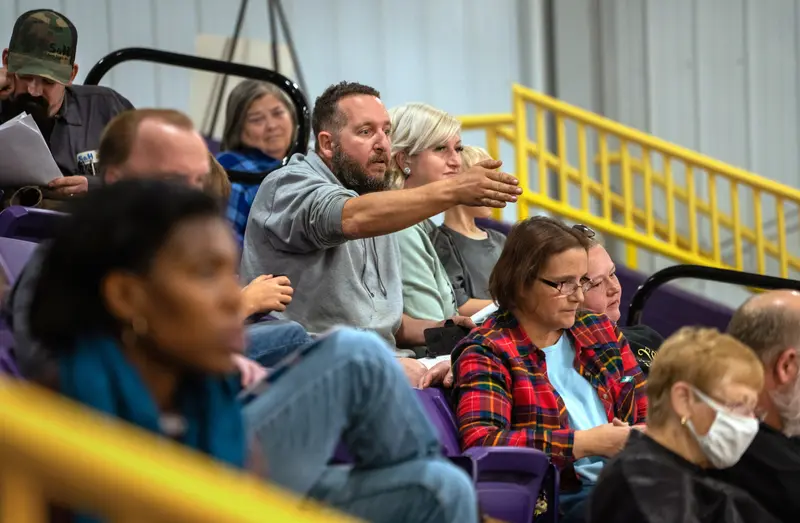When the Environmental Protection Agency hosted a meeting last week to discuss hazardous air pollution in Verona, Missouri, Mayor Joseph Heck came armed with demands for round-the-clock air monitoring and a study of local cancer rates. “We’re here to find out more about the ethylene oxide pollution,” Heck said, referring to a potent chemical that can cause cancer by mutating DNA. “We know it is here. We know it’s dangerous, and we want answers.”
The EPA had announced the event a few weeks after ProPublica published a unique, detailed analysis showing hot spots across the country where cancer risk is elevated by pollution from nearby industrial facilities, and after TV station KY3 aired a segment highlighting our analysis’s implications for the city’s 620 residents. One of Verona’s largest employers, the BCP Ingredients manufacturing facility, was substantially increasing the cancer risk in the area with its ethylene oxide emissions, our analysis showed. In some places, including the post office and city hall, the industrial cancer risk was an estimated 27 times the level that the EPA considers acceptable. The company said in a statement that the facility “is in full compliance” with federal and state regulations.
In the high school gymnasium, officials from the EPA’s regional office and Missouri’s Department of Natural Resources were barraged with questions from a community witnessing firsthand the flaws of a regulatory system that is supposed to safeguard them from unsafe levels of air pollution. They learned that the company’s emissions data is self-reported and unverified. (“That is the stupidest thing I’ve ever heard in my goddamn life,” one resident yelled from the bleachers.) They heard state officials say they were prevented, by Missouri law, from enforcing tougher restrictions than the federal government’s, and heard EPA officials say they had limited authority over the facility. (“You all don’t even have the authority to shut them down?” another resident asked.)
Toward the end of the meeting, Verona alderwoman Amy Spears said these officials were constrained by decisions made above their heads. “We need to go to our legislators,” she said, to loud applause. Greg Winters, a military veteran who’d recently moved to the area to start a family farm, said he would be paying close attention to what happens next, because he is worried about his kids’ long-term health. “As soon as I saw that report, I knew I needed to come down here tonight,” he said. “It pissed me off.”
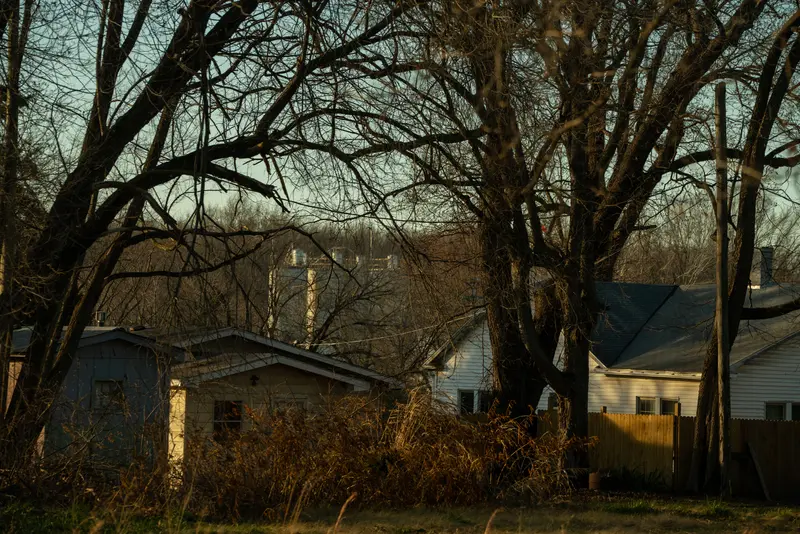
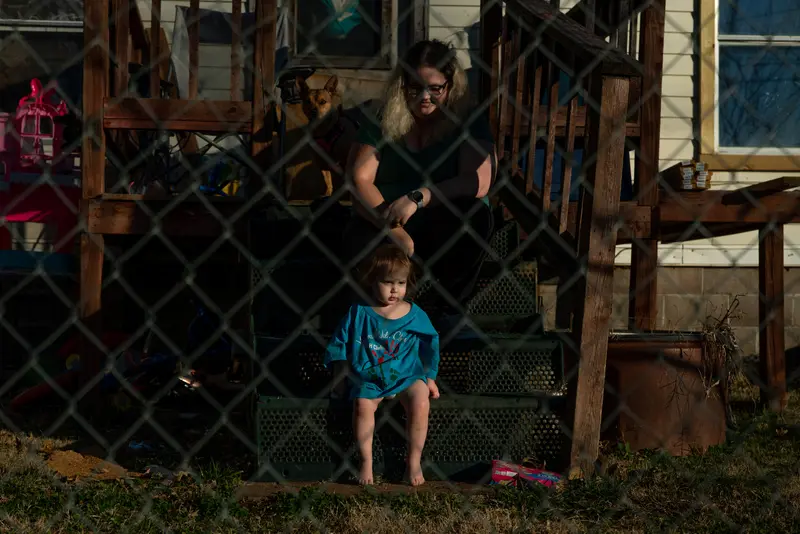
Over the past several decades, many major environmental reforms have started with individuals and citizen groups pressing for change. The first step to achieving any kind of impact, experts told us, is for people to understand the risks they face. Even though the EPA’s mission emphasizes the importance of risk communication, the agency is generally not required to reach out to communities about their cancer risks from industrial air pollution. This year, ProPublica analyzed EPA data to find the estimated excess lifetime cancer risk for every quarter of a square mile in the country. Then, we launched a wide-ranging effort to discuss those risks with people who live in these hot spots.
We mailed postcards to more than 8,800 homes closest to some of the most toxic areas of air pollution we identified and distributed flyers to public libraries. We called churches, schools, gardening clubs, yoga studios and bowling alleys, asking them to spread the word. Our journalists joined cancer support group meetings to discuss the kinds of cancer linked to chemicals being emitted nearby. On community-based subreddits, moderators allowed us to share our work and invite people to participate in our reporting. At a virtual event with over 100 attendees, residents living in hot spots asked questions of our reporters, and during a separate event for journalists, our team shared tips on how to best investigate the impacts of toxic industrial pollution. More than 60 local TV stations nationwide aired segments on the facilities in their viewers’ neighborhoods, often demanding answers from local officials and regulators; at least 13 local newspapers did the same.
Across the country, residents have been mobilizing, using ProPublica’s analysis to push the issue at civic meetings and circulate a petition demanding federal reform that has now been signed by more than 88,000 people. In a hot spot in Charleston, West Virginia, James Wilson knocked on all the doors on his street to survey his neighbors about their health. In a hot spot in Radford, Virginia, an oncologist planned to submit a proposal for a cancer cluster study, Louis Baudoin started mapping wind patterns so he could close his windows when toxic air was blowing his way, and Lori Wills planned to attend future community meetings about the polluting facility. “I never realized how many people around me shared these concerns,” she said.
ProPublica reporters have heard from more than a thousand people who live in or near more than 100 hot spots across 34 states. They described familiar scenes: the putrid smells and jet-engine-like sounds emanating from facilities, their frustration and anger, their illness and loss. Many had not realized they were at risk; others had long been concerned but did not know the extent to which their experience was shared.
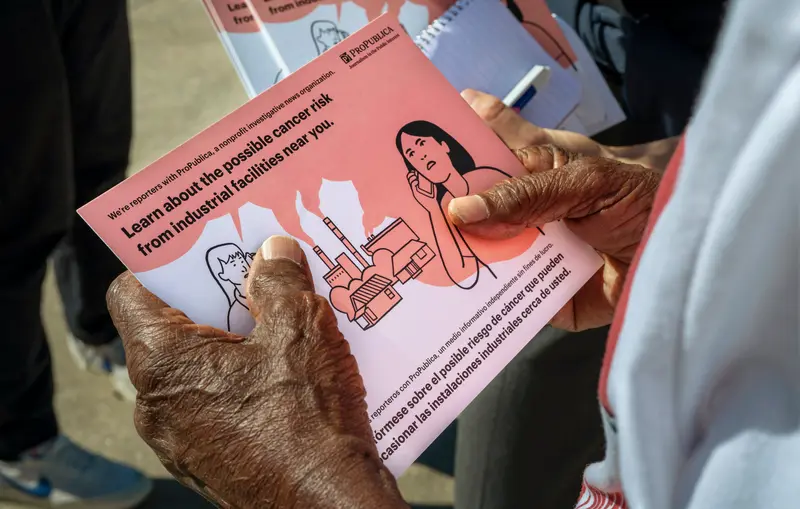
Residents living in hot spots offered advice for us to share with others in their situation. Much of it boiled down to this: Move away if you can. But we heard from dozens more who said they could not do that because of tight finances, industry-related employment or nearby family members. Many said there will be no relief for them without reform.
“Addressing risks from air toxics is a priority for the Agency,” wrote EPA Deputy Press Secretary Tim Carroll in an emailed statement. In November, EPA Administrator Michael Regan visited some of the country’s largest hot spots of toxic air pollution, which had been identified in ProPublica’s analysis, on a “Journey to Justice” tour where he promised reforms. “A critical part of this work is listening to and engaging with impacted communities and communicating about the risks they face and efforts and actions that can help reduce risk,” Carroll said.
Here are some of the stories of the people we spoke with, which illuminate what it means to live in a neighborhood awash with toxic air. We are including our estimates of the lifetime excess cancer risks where they live and work. The EPA says it strives to keep the risk for as many people as possible to 1 in a million, meaning that out of a million people breathing in industrial air pollution over a lifetime, one person would develop cancer from that risk alone, on top of any cases from other risks people already face. The agency deems risks at 100 times that level — 1 in 10,000 — acceptable, though numerous experts told us that is too high. While it is impossible to tie a given cancer case to emissions from specific facilities, our analysis is meant to be a starting point for residents and officials to investigate areas of concern.
Mike Garrett first realized the extent to which toxic air pollution could impact residents when he was a few years into his job as an operator at the E.I. du Pont de Nemours facility in Victoria, Texas. It was the mid-1980s, and there was a power outage across a large swath of the plant, which produced chemicals that are used to create nylon. “It was quite a bit of nitrous oxide release, which is an orange cloud,” Garrett said. It was moving away from where he was standing, traveling miles before dissipating. He worried about his wife and their five daughters, who were in the direction the cloud was heading.
A few years later, Garrett’s dad — who had worked for more than three decades at the Union Carbide facility a bit closer to the Gulf Coast — was diagnosed with multiple myeloma. Since then, studies have found that exposure to ethylene oxide and benzene, which Garrett’s dad said he worked closely with, has been associated with higher rates of that kind of cancer. Garrett’s father died a few years later from related complications at the age of 67. Shortly after, his mom, Bessie, was also diagnosed with multiple myeloma. She died at 69.
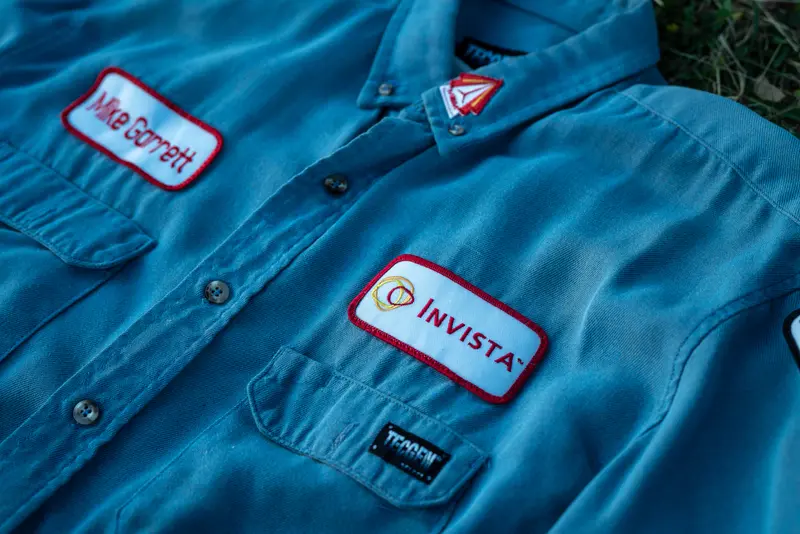
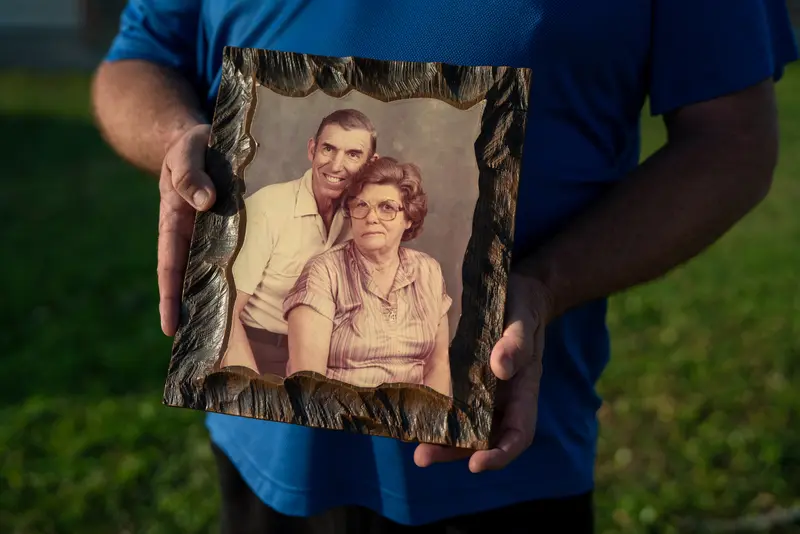
“She would always wash his clothes when he got home from work,” Garrett said. “I worked in the environmental area in the chemical industry to prevent that pollution, and I’ll be the first to tell you we made some mistakes.” (Neither Dow, which acquired Union Carbide, nor Invista, a subsidiary of Koch Industries that acquired the DuPont facility, nor E.I. du Pont, which is now doing business as Corteva Agriscience, responded to requests for comment.)
Garrett left the chemical industry in 2012 after becoming a pastor at a nearby Baptist church. He has mixed feelings about the industrial facilities. On one hand, paychecks from the facilities ensured he had food on the table growing up and allowed his daughters the chance to pursue advanced degrees. “They can do a lot of good, and they do support a lot of people,” Garrett said. On the other hand, while environmental controls have improved, he said more can be done to protect nearby residents. Once every few years, when he sees smoky substances billowing toward his home as he is driving in the area, he thinks to himself: “We’re too close.”
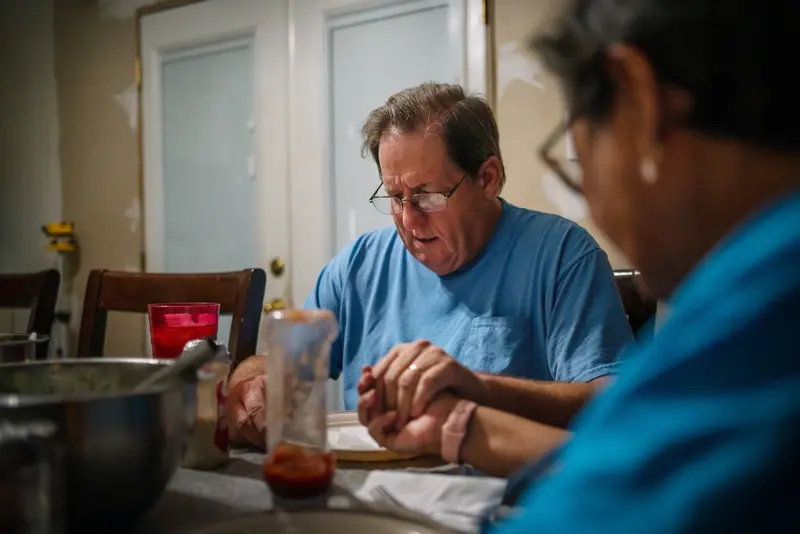
The Union Carbide facility southeast of Victoria, which is owned by Dow, is responsible for the majority of the estimated excess lifetime cancer risk from toxic air pollution in much of the area, according to ProPublica’s analysis of 2014-18 data. The facility produces chemicals that are used in an array of products, including car parts and food and beverage containers.
Since 2017, the Texas Commission on Environmental Quality has fined the facility $610,431 for violations that include failing to comply with permits and releasing unauthorized emissions, according to agency spokesperson Gary Rasp.
The state agency carried out its own assessment on ethylene oxide, a chemical that contributes to the estimated cancer risk in this hot spot, and has concluded that it is less risky than the EPA says it is. ProPublica’s analysis is based on the EPA’s risk assessment. (Read more about our methodology here.)
Rasp suggested residents who are concerned about their health should file a complaint with the agency and see their health care provider. He also said the agency is looking into the estimated risk scores from ProPublica’s analysis, adding that this “can then drive evidence-based decision making for the agency on appropriate response of actions.”
Leticia Hinojosa Hahn grew up in Baytown, Texas, 3 miles from an enormous ExxonMobil oil refinery and a cluster of chemical manufacturers. Her father worked for the industry, and Hahn’s old elementary school was built on land donated by Humble Oil, which later became part of ExxonMobil. Many residents didn’t realize the site had once been an underground oil storage pit. The school closed in 1995 after a black, tar-like substance seeped out of the playground. As a teenager, Hahn recalled seeing the flames from ExxonMobil’s refinery as it burned off gases. “I was about 14 when I started becoming aware of, Hey, maybe all that black smoke coming out of those buildings might not be good for us,” she said. “Should we be worried?”
Hahn was close to Lily, her twin. They slept in the same bed until they were 17 and looked so similar that even their grandparents couldn’t tell them apart, Hahn wrote in her memoir. “Identical twins never have to worry about being alone. … From the beginning, you are ‘one of two’ like an outfit or a music album. You do not have the complete set, without the other.”
When she was 26, Lily gathered the family and told them she had stage 4 kidney cancer. To soften the blow, Lily brought cake. “She smiled about the thought of having some buttercream vanilla icing cake while we stood in silence still stunned by the news,” Hahn wrote. In an interview, she said that Lily wanted to do everything she could to stay alive longer, even if it was just one extra day. “She was more worried about what her death would do to the rest of us, not what it would do for her.”

Kidney cancer has been linked to ethylene oxide, a chemical released by at least one manufacturing plant near the twins’ childhood home, where Lily lived until she graduated from college. (LyondellBasell, the company that operates the facility, did not respond to a request for comment.) Lily died in 2015, at age 32. The cancer had spread to her lungs, her spine and her lymph nodes. Hahn knows it’s impossible to prove whether industrial pollution contributed to her twin’s death. That uncertainty is a constant source of frustration. If the companies’ pollution played a role in Lily’s illness, then “they took the biggest thing from my world.” Representatives with ExxonMobil did not respond to a request for comment.
Once every six months, Hahn gets scanned for kidney cancer. She’s thought about moving, but her kids like their school, and she can’t afford the homes in wealthier neighborhoods farther from the polluting plants.
Equistar Chemicals Bayport Plant, which is owned by LyondellBasell and produces chemicals used in consumer products ranging from food containers to diapers, is responsible for the greatest share of estimated excess cancer risk in Hahn’s neighborhood, according to ProPublica’s analysis of 2014-18 data. LyondellBasell did not respond to a request for comment.
The Texas Commission on Environmental Quality has fined the facility at least $52,204 in the past five years for three air-quality violations, according to an EPA enforcement database. During an inspection this August, the agency identified two alleged violations for emissions and reporting, according to Rasp, a spokesperson for the Texas environmental agency. On Tuesday, the agency asked the Office of Attorney General to initiate civil legal action against the facility for its violations.
Mayor Joseph Heck’s days are filled with the minutiae of small-town government: tornado siren testing, city council meetings, the groundbreaking ceremony for a community center. When he moved to Verona nearly seven years ago with his partner, Crystal Payne, he had no idea it was a pollution hot spot. Payne, 37, is a breast cancer survivor who was in remission when they moved. Her doctors had said she had an 80% chance of never getting cancer again, Heck said. Within a year of living in Verona, her cancer had spread to her brain, then her liver. Last year, the community held a chili cook-off and silent auction to benefit Payne.
Heck said he first heard the term “ethylene oxide” in 2019, when the EPA held several public meetings about what seemed like a more urgent matter: an old toxic waste site on land now owned by BCP Ingredients. The EPA mentioned ethylene oxide, but it seemed like an afterthought, Heck said. He didn’t realize how his community was at risk until the local TV station ran a segment about ProPublica’s analysis.
“Our citizens are being sacrificed” so some business can make money, he said. The news prompted him to request a health survey from Missouri’s Department of Health and Senior Services. “While cancer is of the highest concern, we understand that there may be other ailments that are triggered or caused by exposure to EtO,” he wrote in his letter to the state agency, “and knowing if the average rate for those diseases is higher, lower or similar to other areas is another way to reassure our community” or empower them to make the best decisions for their health, he added.
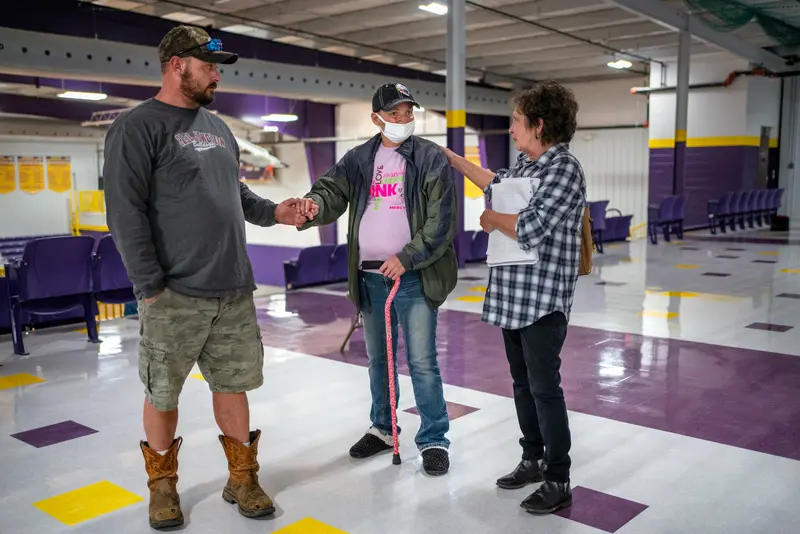
Heck doesn’t want the plant to close. He recognizes its importance to local employees and the tax base. He just wants the government to force it to clean up its act. “Think about the people who live [with] cancer in our small town,” he said during the community meeting. “I think about the bills and the money we have to go through to keep our dying loved ones here.”
Amy Algoe-Eakin, the EPA’s branch chief of air permitting for the region that covers Missouri, said the agency first realized the scope of Verona’s ethylene oxide risk in 2018. Since then, it has worked with BCP Ingredients to lower emissions. BCP launched a leak-detection program and started treating its wastewater to further reduce emissions, she said. Algoe-Eakin also said her office had spent six months asking BCP to provide independent proof of its emissions numbers. BCP recently told the agency it’s looking for a certified contractor to conduct emissions tests to help verify data, the EPA said. The agency added that federal or state regulators would observe the testing in person.
Facilities that emit a certain amount of toxic air pollution are subject to additional regulations and pollution controls. The BCP plant’s emissions are below these thresholds. “All of environmental law is filled with these binary categories, and we know a bunch of things are falling through the cracks,” said Wendy Wagner, a law professor at the University of Texas at Austin School of Law. However, Wagner said the EPA should be able to require air monitoring, regardless of the total amount of pollution the facility emits.
BCP Ingredients is responsible for all the excess industrial cancer risk in Verona, according to ProPublica’s analysis of 2014-18 data. BCP is a subsidiary of Balchem, a New York-based company that reported $25 million in net earnings last quarter. The Verona facility produces choline chloride, an animal feed additive that helps livestock gain weight. In a statement, BCP said it has “strict protocols in place to ensure that we’re safely manufacturing, storing and transporting ethylene oxide which is used to sterilize medical and surgical equipment for life-saving surgeries and medical procedures.” In October, the federal Occupational Safety and Health Administration cited the facility for 24 violations related to worker safety and toxic chemical exposure; the company paid $171,000 in fines.
Raven Green’s family moved from a small town in Louisiana to Port Arthur, home to several of the country’s largest oil refineries, when she was 6. At first, she was wowed by the bright lights of the towering chemical plants. After college, she spent three years working as a security guard at the Chevron Phillips chemical plant until she was unexpectedly hospitalized in 2017, admitted to MD Anderson Cancer Center, and diagnosed, at age 28, with leukemia, a form of cancer linked to benzene emissions. (Chevron Phillips didn’t respond to ProPublica’s request for comment.) She underwent more than six months of chemotherapy. “I threw up all day every day, no matter what I ate or drank,” said Green, who remembers her medical team saying the cancer drugs were “like rat poison.”
After Green went into remission in early 2018, she decided to leave the industry for an assistant manager position at Big Lots. She didn’t realize that the area’s pollution reached her current home until years later. Sitting on her couch, Green learned from ProPublica’s map of industrial cancer risk that her house on Evergreen Drive stands in a grid square where emissions from at least five plants have contributed to an estimated cancer risk of 1 in 13,000. In one of the five years of data ProPublica analyzed, the cancer risk near Green’s home was an estimated 1 in 9,000 — a level that the EPA considers unacceptable. She has also previously lived in a part of town where the cancer risk is double what it is at her current home.
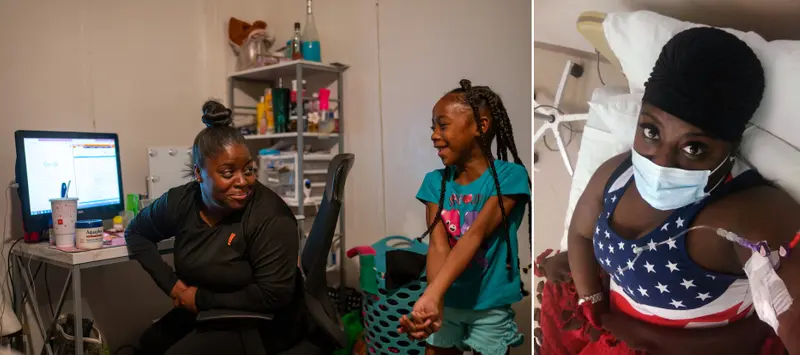
“I’m trying to believe that I won’t get it again,” Green said. “But I don’t know how I got it before. So I might get it again. Someone else living here might get it.”
Indorama Ventures Holdings LP owns the Huntsman chemical manufacturing facility in nearby Port Neches, which is responsible for the largest estimated share of excess cancer risk from toxic air pollution around Green’s home, according to ProPublica’s analysis of 2014-18 data. The company did not respond to requests for comment. The Huntsman facility produces chemicals that are used in everyday household items, ranging from electronics to beauty and personal care products.
The Texas Commission on Environmental Quality has fined the facility $189,690 since May 2018 for numerous violations, including failing to comply with its permit, failing to prevent unauthorized emissions and failing to provide accurate emissions estimates, according to Rasp, an agency spokesperson. He said the agency has installed ambient air monitoring devices in fence line communities statewide and “continues to take actions to ensure that fence line communities, such as those around the Huntsman facility in Port Neches, are protected from adverse effects of industrial chemicals.”
When Zachary Defrancis bought his three-bedroom ranch in 2019, he hoped to settle down a short drive away from his childhood neighborhood. The 27-year-old teacher’s life has been shaped by the inescapable presence of more than a dozen petrochemical facilities that dominate the skyline in Port Arthur, Texas. As part of his seventh-grade history course, he taught the story of the oil boom in southeast Texas and the economic prosperity that followed. When he mentioned noticing the stench of rotten eggs — sulfur wafting from the plants — people often responded: “It smells like money.”
But after moving into his house, Defrancis grew increasingly aware of the costs of living near the oil and petrochemical industries. First, he saw giant flares from the Huntsman chemical plant from his front yard. (Indorama has since acquired the plant; they did not respond to requests for comment.) Then came the massive explosion at the TPC Group petrochemical plant less than 2 miles from his home. (A spokesperson said TPC “works rigorously to meet or surpass all safety and environmental regulations.”)
It wasn’t until Defrancis plugged his address into ProPublica’s nationwide map of industrial cancer risk that he started having deeper worries about living there. His home is in an area where the estimated cancer risk is 1 in 2,700, nearly four times the level deemed acceptable by the EPA. “When does public health become more important than running a business?” he said.
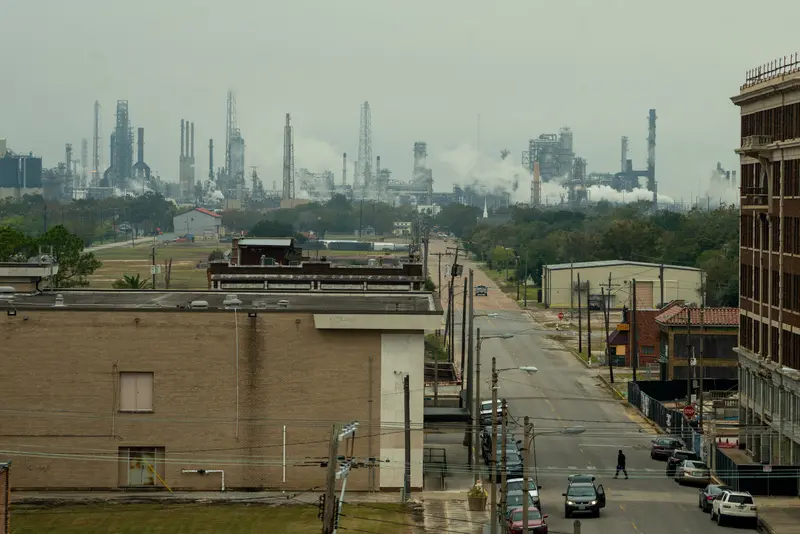
Now aware of the severity of his hometown’s air pollution, Defrancis is faced with a tough choice. Should he stay? He knows that will mean constant exposure to a host of chemicals, including ethylene oxide and benzene, that are linked to cancer. Should he leave? He believes that finding a similar house he can afford, in a place away from toxic air pollution, would require moving farther away from his family and friends. As he grapples with what to do next, he’s thought about the children in his community who have had cancer and whether the pollution has played a role in their sickness. Once in a while, he broaches the topic of pollution in the classroom. “Do I teach the kids about the hazards of pollution?” Defrancis asked. “Yes.”
DeFrancis, like Raven Green, faces the most excess cancer risk from pollution emitted by Indorama Ventures’ Huntsman chemical production facility.
Growing up, Kolby Webster would walk to the grocery store and school, smelling fumes that the wind carried from nearby refineries to the north side of Tulsa, Oklahoma. His friends and neighbors who could afford inhalers often carried one. In middle school, he began riding his bike through Tulsa’s neighborhoods. In the suburbs on the south side, where the vast majority of residents are white, there was green, open space, fresh air and quiet; on the north side, where many more residents are Black, he heard clanging and smelled the fumes of industry. In an effort to make a change in his community, he started to attend neighborhood zoning and planning meetings.
In 2019, he read an article in the Tulsa Star about HollyFrontier, an oil company that operates two facilities in the city. He learned that their refineries were some of the worst polluters in the country. Webster and other residents feared the fumes. “As a Black person, I don’t need anything else working against me,” he said. At city council meetings, he witnessed dozens of activists in their 60s and 70s pushing for answers and felt their pain as their pleas for air monitoring went unmet.
He reached out to the author of the article, public health nurse and environmental activist Nancy Moran, who was also a friend. Moran sought answers on the relationship between this pollution and residents’ health. She surveyed residents living near the refineries and heard story after story about people having respiratory issues and knowing too many others who had been diagnosed with cancer. Moran would later discover, through ProPublica’s analysis and map, that residents in West Tulsa and near Tulsa’s west and north side border face elevated estimated cancer risks from the toxic air pollution the refineries release.
Moran said it’s important to keep pushing for change despite the disappointments: “I try to remember what motivates me, not what gets in my way, so that’s how I keep going and just trying to spread the word.”
Corinn Smith, HollyFrontier’s director of corporate communications, said the company has been investing in equipment to reduce the amount of toxic air pollution it releases into surrounding neighborhoods and is committed to continuous improvement. “We take feedback seriously and are dedicated to working with the community and the Oklahoma Department of Environmental Quality on inquiries and concerns,” said Smith.
An Oklahoma Department of Environmental Quality spokesperson said the facility is in compliance with both the EPA’s and state agency’s regulations, and so the agency will not be taking action based on ProPublica’s findings. Residents concerned about their health, the spokesperson said, are encouraged to seek advice from their health care providers and to call the agency’s complaint hotline. Since 2017, the state has assessed at least two penalties against the eastern facility totaling $3,376, and at least two penalties against the western facility totaling $53,000, according to an EPA enforcement database.
Dec. 16, 2021: This story originally gave the wrong ages for Mike Garrett’s parents at the time of their deaths. Garrett’s father died at 67, not 63, and his mother died at 69, not 67.
Al Shaw and Lylla Younes contributed data reporting. Jacqueline Neber, Greg Morton and Natalia Gutiérrez Ávila contributed engagement reporting.
Cynthia Gordy Giwa, Connor Goodwin, Kengo Tsutsumi, Erin Smith and Alissandra Calderon contributed outreach.
Graphics by Lucas Waldron and Al Shaw.
